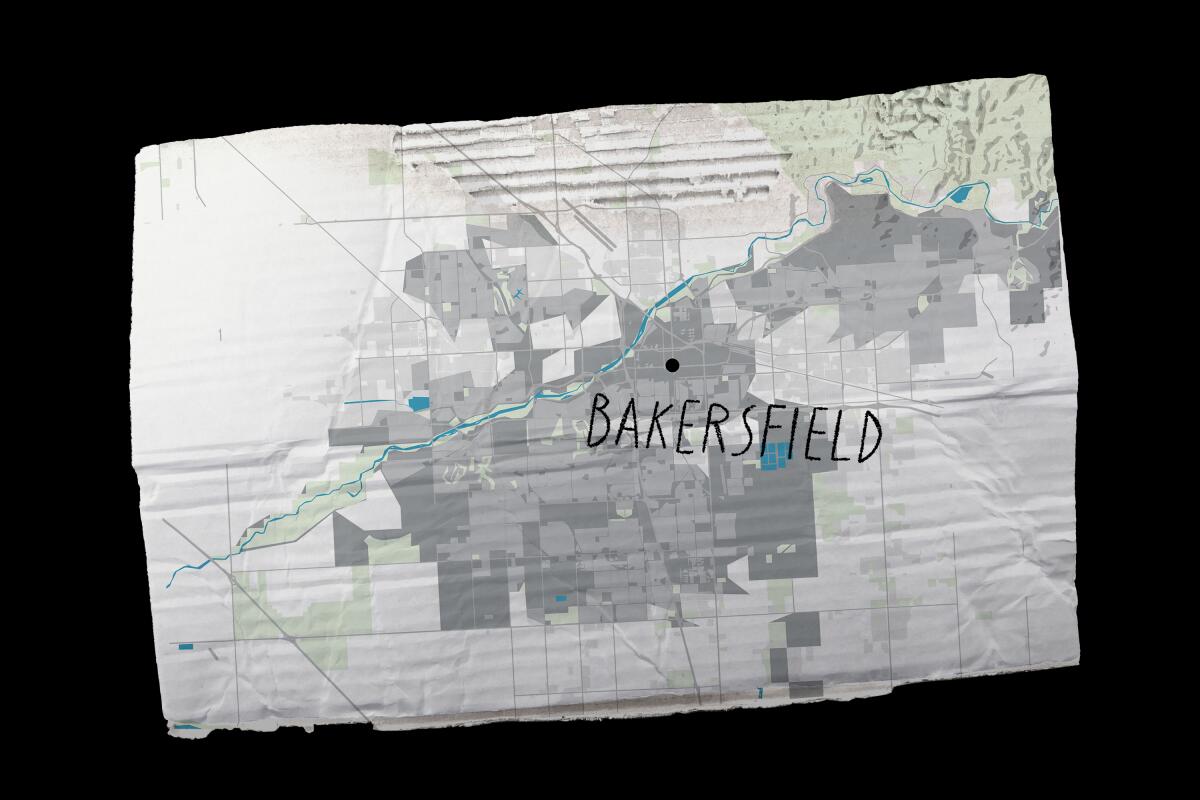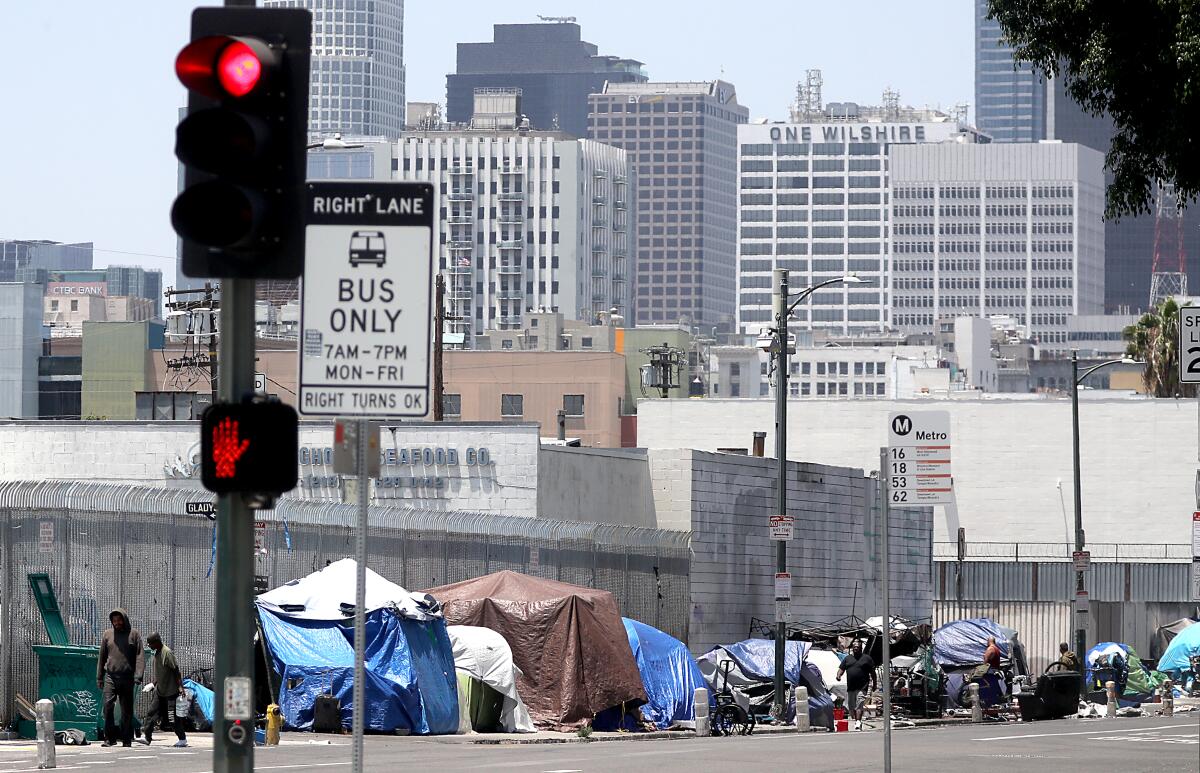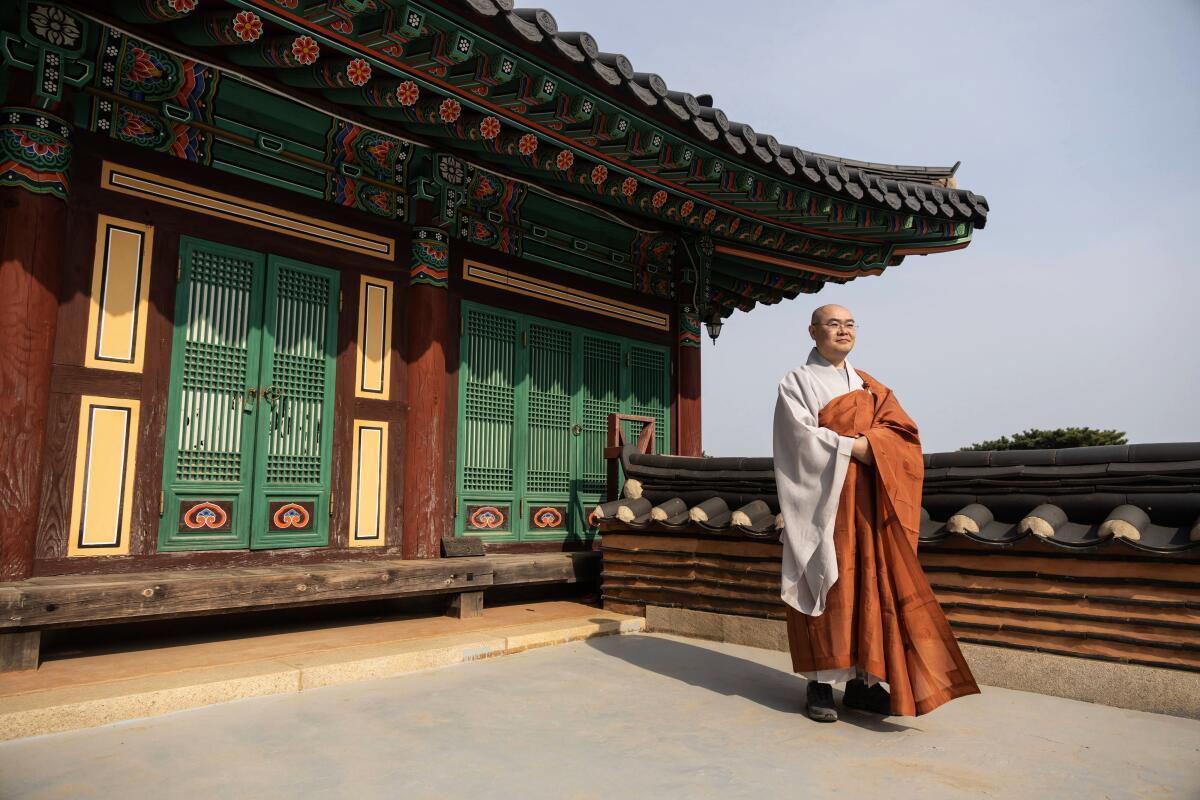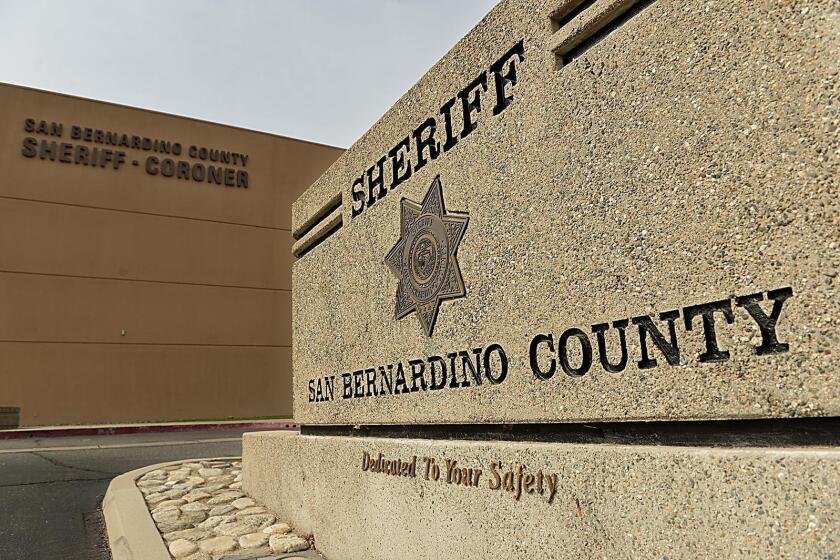What cities can learn from Bakersfield’s brief success ending chronic homelessness

- Share via
Good morning. It’s Tuesday, April 23. Here’s what you need to know to start your day.
- Bakersfield eliminated functional homelessness. But only for a moment.
- California’s encampment policy will be impacted by a homelessness case the Supreme Court is divided on.
- Los Angeles County faces $12.5 billion in climate costs through 2040, a study says.
- And here’s today’s e-newspaper
You're reading the Essential California newsletter
Our reporters guide you through our biggest news, features and recommendations every morning
You may occasionally receive promotional content from the Los Angeles Times.
Inside Bakersfield’s short-lived success
City leaders across California have struggled to prove they can move the needle on homelessness. For a moment, Bakersfield and Kern County were an exception. A brief, fleeting, pre-pandemic moment.
For the record:
2:35 p.m. April 25, 2024An earlier version of this report said Bakersfield reached functional zero homelessness. The city and county reached functional zero for chronic homelessness, a specific designation that does not apply to all unhoused people.
Officials there focused their efforts on a specific goal: Reaching functional zero for chronic homelessness.
Before we dive in further, let’s define those terms:
Chronic homelessness applies to people who experience homelessness for at least a year, or off-and-on over three years, and have been diagnosed with conditions including substance use disorder and serious mental or chronic illnesses, according to the U.S. Department of Housing and Urban Development.
Functional zero is when the number of people leaving chronic homelessness and finding permanent housing is equal to or greater than people still in homelessness.
The metric is a response to an unfortunate fact about the homelessness crisis: The system meant to respond to homelessness isn’t capable of keeping up with the crisis in a way that ensures it’s a rare and brief event in people’s lives. That’s according to Beth Sandor, who leads the Built for Zero program for the nonprofit Community Solutions.
“There are excellent programs providing excellent services that people need,” Sandor told me last year. “The question is: Is all of that work adding up to fewer people experiencing homelessness this month than last month?”
Bakersfield is one of only five communities that reached functional zero homelessness
Bakersfield and Kern County adopted functional zero as a goal in 2015 and by January 2020, it was one of only five communities across the U.S. to hit the mark, according to Community Solutions, which published a case study back in 2021.
In terms of raw numbers, it’s a small figure — the county housed about 70 people, mostly in Bakersfield.
How Bakersfield made it happen
The city and county’s homelessness response system kept track of each individual person identified as chronically homeless.
That access to quality data was key, according to Rick Ramos, interim executive director for the Bakersfield-Kern Regional Homeless Collaborative, because “at any single time, we know every single individual within that subpopulation that is experiencing homelessness.”
“That way, we can really concentrate our efforts on getting them either connected to the resources they need, or exited into a permanent housing destination,” he said.
Bakersfield’s achievement proves “it’s possible to build a system of support that ensures their most vulnerable neighbors can leave homelessness behind,” the case study reads. “This does not mean that no one will ever experience homelessness again, but rather that the community has proven homelessness does not need to become inescapable or a way of life for a group of their most vulnerable neighbors.”
Both Sandor and Ramos pointed to a few key characteristics that made meaningful progress on homelessness:
- Dynamic, real-time data that allow government agencies to understand the fluctuation in people experiencing homelessness.
- Cooperation and unity among agencies and service providers working toward a well-defined, common goal
- Responsive leaders “with the capacity to be looking across the whole system” who can solve problems and prepare for future challenges
- Strong engagement from the healthcare systems and a powerful political advocacy
It’s important to note that Bakersfield and Kern County weren’t just finding temporary shelter for people. A “positive exit” from homelessness means having an actual home with “the same kind of rights to tenancy that you have when you have signed a lease or, buying a home,” Sandor said.
Compare that to the metrics of progress touted late last year by Los Angeles Mayor Karen Bass, who announced that “more than 21,000 unhoused Angelenos have come inside” in 2023.
Those numbers refer to Angelenos placed in interim housing, including motel and hotel rooms, congregate shelters and tiny homes. From the federal and L.A. County perspective, they are still considered unhoused — just sheltered as opposed to unsheltered. Times columnist Erika D. Smith noted that those temporary stays are likely to drag on.
The 2023 Greater Los Angeles Homeless Count showed chronic homelessness jumped 18% from the previous year, and an even higher share of those Angelenos were living outdoors.
Bakersfield ultimately could not sustain functional zero homelessness
Sandor said one key issue has been securing “last mile” access to affordable units, a challenge playing out throughout the state. Another factor: Key city leaders were considered so successful they were promoted into other roles, Sandor said.
Then there was the historic pandemic, Ramos noted.
“A lot of the work that we were doing prior to reaching functional zero for chronic homelessness… was being done in person,” he said.
The organizations tasked with addressing homelessness have also struggled to maintain their data-monitoring capacity. Sandor said Community Solutions has been helping them build that back up.
“We have a high degree of confidence they’ll get there again,” she said.
It’s all about housing
Margot Kushel, a professor of medicine and director of the Benioff Homelessness and Housing Initiative at UC San Francisco, told me it’s impressive when any community can reach functional zero, especially in California.
But delivering results like Kern County was able to achieve pre-COVID relies on much more than homeless service systems are able to control, she explained. Even if those systems were functioning perfectly (which they don’t, she noted), they’re treating the symptoms — not the root causes that continue to push people into homelessness.
“If you put all of your resources into the emergency solutions [such as] shelters, you remove the problem from the public eye,” Kushel said. “You maybe — on a very modest level — improve outcomes.” But to make real progress? She had one foolproof solution:
“The rates of homelessness and the ability for people to exit homelessness really has everything to do with the availability and affordability of housing for low-income folks.”
This week’s series exploring homelessness solutions continues Wednesday. We’ll head to San Diego, where fed-up business leaders are floating their own solution as the deaths of unhoused residents surge.
If you missed the first installment of the series, you can read it here.
Today’s top stories
Supreme Court
- The Supreme Court is divided on a homelessness case that will affect California’s encampment policy.
- A Los Angeles man was denied a visa, in part, over his tattoos. Now, the Supreme Court is hearing his case.
2024 elections
- How an expensive bet by the Democratic political group, Emily’s List, in an Orange County congressional race went awry.
Climate and environment
- L.A. County faces $12.5 billion in climate costs through 2040, a report by the nonprofit Center for Climate Integrity said.
- Steelhead trout once thrived in Southern California’s streams. But they are now declared endangered.
- A cooler pattern to close out April in Southern California: showers, clouds and dropping temperatures.
Courts and crime
- The suspect in a break-in at Mayor Bass’ home was previously convicted of violent assault.
- Los Angeles County sheriff’s deputy dies six months after fire at shooting range.
- A woman who was fatally stabbed while riding L.A. subway was found at the Universal City station.
More big stories
- High-speed rail to Las Vegas is coming as soon as 2028. Here are more details.
- LACMA is planning to share its collection with a new Las Vegas museum.
- How L.A. County is trying to remake addiction treatment — no more ‘business as usual.’
- Universal Studios tram tossed 15 riders to the ground, accident investigators say.
- Chris Pratt, Katherine Schwarzenegger could’ve given Craig Ellwood teardown ‘some honor,’ architect’s daughter says.
Get unlimited access to the Los Angeles Times. Subscribe here.
Commentary and opinions
- LZ Granderson: Republicans aren’t protecting elections. They don’t want democracy.
- Doyle McManus: Trump’s hush-money criminal trial could be a cure for ‘Trump amnesia.’
- Harry Litman: How Trump’s trial will go well beyond the charges to paint a damning portrait of him.
- Lorraine Ali: Without cameras in the courtroom, Trump has already won a major victory in hush money trial.
- Jonah Goldberg: The Republican Party can still do what’s rational and right. Here’s the proof.
- Mary McNamara: In defense of helicopter parents.
- Michael Hiltzik: The UAW sends a lightning bolt into anti-union states with a huge victory at a VW plant.
- Anita Chabria: In Grants Pass, Justice Sotomayor sliced through the spin.
Today’s great reads
Inspired by reality TV, Buddhist monks become matchmakers at the third edition of “Naneun Jeollo” — or “To the temple” — a matchmaking event launched last year by the Korean Buddhist Foundation for Social Welfare to fulfill the religion’s commitment to fostering “social cohesion.”
Other great reads
- David Ellison’s journey from trust fund kid to media mogul vying to buy Paramount.
- “Something more dream-like”: These butterflies tell an unexpected story about migration.
How can we make this newsletter more useful? Send comments to essentialcalifornia@latimes.com.
For your downtime
Going out
- 🍰 The minimalist cake trend is here to stay. Get in line at this viral Koreatown bakery.
- 🍿 Provocative ‘Civil War’ prevails at the box office in its second weekend.
- 🎭 Review: ‘Cabaret’ with a kinetic Eddie Redmayne can’t redeem a faltering Broadway revival.
Staying in
- 🏡 Nix the oven? A skinny fridge? Tips on designing a tiny kitchen in your ADU.
- 🧑🍳 Here’s a recipe for chef José Andrés’ Buttery Shrimp With Dill (Garides Me Ánitho).
- ✏️ Get our free daily crossword puzzle, Sudoku, word search and arcade games.
And finally ... a great photo
Show us your favorite place in California! We’re running low on submissions. Send us photos that scream California and we may feature them in an edition of Essential California.

Today’s great photo is from Rene Bennett: a photo of the succulent garden at the South Coast Botanic Garden, in Los Angeles County.
Rene writes: “California is home to so many beautiful places. The South Coast Botanic Garden is built on a former landfill and shows what can happen with a little care, inspiration and community.”
Have a great day, from the Essential California team
Ryan Fonseca, reporter
Defne Karabatur, fellow
Christian Orozco, assistant editor
Karim Doumar, head of newsletters
Check our top stories, topics and the latest articles on latimes.com.
Sign up for Essential California
The most important California stories and recommendations in your inbox every morning.
You may occasionally receive promotional content from the Los Angeles Times.







